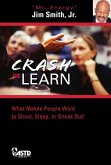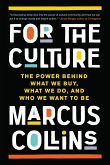Media Audiences
Herausgeber: Gunter, Barrie; Machin, David
Media Audiences
Herausgeber: Gunter, Barrie; Machin, David
- Broschiertes Buch
- Merkliste
- Auf die Merkliste
- Bewerten Bewerten
- Teilen
- Produkt teilen
- Produkterinnerung
- Produkterinnerung
The relationship between the media and viewers, readers and listeners is complex and consequently 'audiences' have become a key area in media and communications research in the social sciences and humanities. This major reference collection brings together a range of theoretical, methodological and thematically diverse articles and chapters that comprehensively map the most important kinds of work and ideas in international audience studies. Volume I overviews the history of audience research and the ways that audiences have been conceptualised. It includes papers that consider how debates and…mehr
Andere Kunden interessierten sich auch für
![Propaganda Propaganda]() Edward BernaysPropaganda12,99 €
Edward BernaysPropaganda12,99 €![The Erotic History of Advertising The Erotic History of Advertising]() Tom ReichertThe Erotic History of Advertising21,99 €
Tom ReichertThe Erotic History of Advertising21,99 €![Pikachu's Global Adventure Pikachu's Global Adventure]() Joseph Tobin / Will Derusha / Alberto AceredaPikachu's Global Adventure37,99 €
Joseph Tobin / Will Derusha / Alberto AceredaPikachu's Global Adventure37,99 €![Your AD Here Your AD Here]() Michael SerazioYour AD Here39,99 €
Michael SerazioYour AD Here39,99 €![Consumed Consumed]() Harry WallopConsumed17,99 €
Harry WallopConsumed17,99 €![Crash and Learn: 600+ Road-Tested Tips to Keep Audiences Fired Up and Engaged! Crash and Learn: 600+ Road-Tested Tips to Keep Audiences Fired Up and Engaged!]() Jim Smith JrCrash and Learn: 600+ Road-Tested Tips to Keep Audiences Fired Up and Engaged!20,99 €
Jim Smith JrCrash and Learn: 600+ Road-Tested Tips to Keep Audiences Fired Up and Engaged!20,99 €![For the Culture For the Culture]() Marcus CollinsFor the Culture17,99 €
Marcus CollinsFor the Culture17,99 €-
-
-
The relationship between the media and viewers, readers and listeners is complex and consequently 'audiences' have become a key area in media and communications research in the social sciences and humanities. This major reference collection brings together a range of theoretical, methodological and thematically diverse articles and chapters that comprehensively map the most important kinds of work and ideas in international audience studies. Volume I overviews the history of audience research and the ways that audiences have been conceptualised. It includes papers that consider how debates and discussions about audiences have changed in the context of different media developments. Volume II deals with different ways that audiences and their responses/uses of media have been measured. This volume pays particular attention to the way that audience studies have responded to the challenges of different media. Volume III focusses on specific genres of entertainment, specific media, or on specific media groups. Finally, Volume IV looks specifically at audience research that has tested the way that the media influence society, attitudes and behaviours. The papers reflect a range of the different topics that have been tested and also to give a sense of different methodologies used to test these.
Hinweis: Dieser Artikel kann nur an eine deutsche Lieferadresse ausgeliefert werden.
Hinweis: Dieser Artikel kann nur an eine deutsche Lieferadresse ausgeliefert werden.
Produktdetails
- Produktdetails
- Verlag: Sage Publications
- Four-Volume Set edition
- Seitenzahl: 1320
- Erscheinungstermin: 1. Juli 2009
- Englisch
- Abmessung: 28mm x 154mm x 238mm
- Gewicht: 2693g
- ISBN-13: 9781847875792
- ISBN-10: 1847875793
- Artikelnr.: 26762336
- Herstellerkennzeichnung
- Libri GmbH
- Europaallee 1
- 36244 Bad Hersfeld
- gpsr@libri.de
- Verlag: Sage Publications
- Four-Volume Set edition
- Seitenzahl: 1320
- Erscheinungstermin: 1. Juli 2009
- Englisch
- Abmessung: 28mm x 154mm x 238mm
- Gewicht: 2693g
- ISBN-13: 9781847875792
- ISBN-10: 1847875793
- Artikelnr.: 26762336
- Herstellerkennzeichnung
- Libri GmbH
- Europaallee 1
- 36244 Bad Hersfeld
- gpsr@libri.de
VOLUME 1: HISTORY OF AUDIENCE STUDY Early Positions Television
s Impact on Society - T. Coffin The State of Communication Research - B. Berelson On the Effect of Communication - W. Davison Functional Analysis and Mass Communication - C. R. Wright On the Use of the Mass Media as "Escape": Clarification of a concept - E. Katz and D. Foulkes Mass Communication Research: An old road surveyed - J. Klapper Audiences as Markets or Public The Audience - J. G. Webster Television Audience Research at Britain
s Independent Broadcasting Authority, 1974-1984 - J. M. Wober and B. Gunter Audiences, Use and Effects Flow and Media Enjoyment - J. L. Sherry Expanding Disposition Theory: Reconsidering character liking, moral evaluations and enjoyment - A. A. Raney Interpretational Audiences Amassing the Multitude: Revisiting early audience studies - J. Z. Bratich Audience Semiotics, Interpretive Communities and the
Ethnographic Turn
in Media Research - K. C. Schroder Social Action Media Studies: Foundational arguments and common premises - G. T. Schoening and J. A. Anderson Assessing Qualitative Television Audience Research: Incorporating feminist and anthropological theoretical innovation - A. D. Lotz Alternative Theoretical Traditions Five Traditions in Search of the Audience - K. B. Jensen and K. E. Rosengren The Rise and Fall of Audience Research: An old story with a new ending - S. M. Livingstone Active Audience Theory: Pendulums and pitfalls - D. Morley New Media Perspectives How do Communication and Technology Researchers Study the Internet? - J. B. Walther, G. Gay and J. T. Hancock New Media - New Pleasures? - A. Kerr, J. Kucklich, and P. Brereton VOLUME 2: MEASUREMENT OF AUDIENCES Quantitative Surveys Audience Flow Past and Present: Television inheritance effects reconsidered - J. G. Webster Television and Leisure Time: Yesterday, today and (maybe) tomorrow - J. P. Robinson Continuities and Discontinuities in Media Usage and Taste: A longitudinal study - H. T. Himmelweit and B. Swift Experience Sampling Methods Applications to Communication Research Questions - R. Kubey and M. Csikszentmihalyi Internet Use in the Contemporary Media Environment - A. J. Flanagin and M. J. Metzger What do Americans Really Want to Know? Tracking the behaviour of news readers on the internet - D. Tewkesbury Controlled Experiments Does Aggression Cause a Preference for Viewing Media Violence - A. Fengistein Forbidden Fruit Versus Tainted Fruit of Warning Labels on Attraction to Television Violence - B. Bushman and A.D. Stack Some Like it Bad: Testing a model for perceiving and experiencing fictional characters - E. A. Konijn and J. F. Hoorn Can you Hear Me Now? The impact of voice in an online gaming community - D. Williams, S. Capalan and L. Xiang Qualitative Depth Interviews Impact of the VCR on Control of Television Viewing - W. Y. Kim, S. J. Baran and K. K. Massey Rethinking the Focus Group in Media and Communications Research - P. Lunt and S. Livingstone Ethnographic/Observational Research Viewing the Viewers: Viewing behaviours by children and adults during television programs and commercials - K. L. Schmitt, K. D. Woolf and D. R. Anderson Do Children Learn How to Watch Television? The impact of extensive experience with Blue
s Clues on preschool children
s television viewing behaviour - A. M. Crawley, D. R. Anderson, A. Santomero, A. Wilder, W. Williams, M. R. Evans and J. Bryant The Rules of Viewing Television in Public Places - D. Lemish Reception Analysis Culture and Communication: Towards an ethnographic critique of media consumption in the transitional media system - I. Ang On Playfully Becoming the
Other
: Watching Oprah Winfrey on Malaysian television - T. Wilson From
Interpretive Communities
to
Communities of Improvisation
- D. Machin and M. Carrithers VOLUME 3: AGGREGATED AND DISAGGREGATED AUDIENCES Demographics Watching Talk: Gender and engagement in the viewing of audience discussion programmes - S. Livingstone Developmental Changes in Adolescents
Television Viewing Habits: Longitudinal trajectories in a three-wave panel study - S. Eggermont In Search of the Older Audience: Adult age differences in television viewing - M. L. Mares and W. E. Woodard Black and White Viewers
Perception and Recall of Occupational Characters on Television - O. Appiah Assertions of Identities Through News Production: News making among teenage Muslim girls in London and New York - H. Noor Beliefs How the Media Effect What People Think: An information processing approach - R. M. Entman Consumers
Intentions to Opt In To SMS Advertising: A cross national study of young Americans and Koreans - A. Muk Personality and Motivational Factors Modeling the Gratification Seeking Process of Television Viewing - C. Lin Uses and Gratifications of Media Violence: Personality correlates of viewing and liking violent genres - M. Krcmar and L.G. Kean Effects of Personality Type on the Use of Television Genre - J. W. Shim and B. Paul Is Psychopathology the Key to Understanding Why Some Children Become Aggressive When They Are Exposed to Violent Television Programming? - T. Grimes, L. Bergen, K. Nichols, E. Vernberg and P. Fonagy Fandom
Celebrating the Story the Way it is
: Cultural studies, corporate media and the contested utility of fandom - S. Murray Medium and Genre Factors Beneath the Viewer of Fragmentation: Television audience polarization in a multichannel world - J. G. Webster TV Diets: Towards a typology of TV viewership - G. Weimann, H. B. Brosius, and M. Wober Why People Watch Reality TV? - S. Reiss and J. Wiltz Living on Dawson
s Creek: Teen viewers, cultural convergence and television overflow - W. Brooker Rereading David Morley
s the
Nationwide
Audience - S. Kim VOLUME 4: AUDIENCES AND INFLUENCES Intended Effects - Political Campaigning Appeals and Strategies of Negative Political Advertising - B. L. Roddy and G. M. Garramone Campaign Advertisements Versus Television News as Sources of Political Issue Information - X. Zhao and S. H. Chaffee Issue-advocacy versus candidate advertising: Effects on candidate preferences and democratic process - M. Pfau, R. L. Holbert, E. A. Szabo and K. Kaminski The Impact of Political Advertising on Knowledge, Internet Information Seeking, and Candidate Preference - N. A. Valentino, V. L. Hutchings and D. Williams Intended Effects - Social Marketing J. L. Andsager, E. W. Austin and B. E. Pinkleton - C. Schooler, J. A. Flora and J. W. Farquhar Moving Toward Synergy: Media supplementation in the Stanford Five-City Project Unintended Effects - Activities and Time Use - Questioning the Value of Realism: Young adults
processing of messages in alcohol-related public service announcements and advertising Reconsidering the Displacement Hypothesis - D. C. Mutz, D. F. Roberts and D. P. van Vuuren Longitudinal Effects of Television on Children
s Leisure-time Reading: A test of three explanatory models - C. M. Koolstra and T. H. van der Voort Unintended Effects - Antisocial Behaviour Effect of Television Violence on Aggressiveness - J. L. Freedman Television Violence and Aggression: The debate continues - L. Friedrich-Cofer and A. C. Huston Television Violence and Aggression: A rejoinder - J. L. Freedman Does Viewing Violent Media Really Cause Criminal Violence? A methodological review - J. Savage Unintended Effects - Public/Private Impression Formation The Anatomy of Agenda-setting Research - E. M. Rogers, J. W. Dearing, and D. Brequian Framing as a Theory of Media Effects - D. A. Scheufele Do talk Shows Cultivate Adolescents
Views of the World? A prolonged exposure experiment - P. Rossler and H.B. Brosius Scope of Self: Toward a model of television
s effects on self-complexity in adolescence - K. Harrison Media Effects on Ethnic Identity Among Linguistic Majorities and Minorities: A longitudinal study of a bilingual setting - R. Clement, S.C. Baker, G. Josephson and K. A. Noels Unintended Effects - Cognitive and Emotional Development Television
s Impact on High School Achievement - G. D. Gaddy The Effects of Television Advertising on Materialism, Parent-child Conflict, and Unhappiness: A review of research - M. Buijzen and P.M. Valkenburg
s Impact on Society - T. Coffin The State of Communication Research - B. Berelson On the Effect of Communication - W. Davison Functional Analysis and Mass Communication - C. R. Wright On the Use of the Mass Media as "Escape": Clarification of a concept - E. Katz and D. Foulkes Mass Communication Research: An old road surveyed - J. Klapper Audiences as Markets or Public The Audience - J. G. Webster Television Audience Research at Britain
s Independent Broadcasting Authority, 1974-1984 - J. M. Wober and B. Gunter Audiences, Use and Effects Flow and Media Enjoyment - J. L. Sherry Expanding Disposition Theory: Reconsidering character liking, moral evaluations and enjoyment - A. A. Raney Interpretational Audiences Amassing the Multitude: Revisiting early audience studies - J. Z. Bratich Audience Semiotics, Interpretive Communities and the
Ethnographic Turn
in Media Research - K. C. Schroder Social Action Media Studies: Foundational arguments and common premises - G. T. Schoening and J. A. Anderson Assessing Qualitative Television Audience Research: Incorporating feminist and anthropological theoretical innovation - A. D. Lotz Alternative Theoretical Traditions Five Traditions in Search of the Audience - K. B. Jensen and K. E. Rosengren The Rise and Fall of Audience Research: An old story with a new ending - S. M. Livingstone Active Audience Theory: Pendulums and pitfalls - D. Morley New Media Perspectives How do Communication and Technology Researchers Study the Internet? - J. B. Walther, G. Gay and J. T. Hancock New Media - New Pleasures? - A. Kerr, J. Kucklich, and P. Brereton VOLUME 2: MEASUREMENT OF AUDIENCES Quantitative Surveys Audience Flow Past and Present: Television inheritance effects reconsidered - J. G. Webster Television and Leisure Time: Yesterday, today and (maybe) tomorrow - J. P. Robinson Continuities and Discontinuities in Media Usage and Taste: A longitudinal study - H. T. Himmelweit and B. Swift Experience Sampling Methods Applications to Communication Research Questions - R. Kubey and M. Csikszentmihalyi Internet Use in the Contemporary Media Environment - A. J. Flanagin and M. J. Metzger What do Americans Really Want to Know? Tracking the behaviour of news readers on the internet - D. Tewkesbury Controlled Experiments Does Aggression Cause a Preference for Viewing Media Violence - A. Fengistein Forbidden Fruit Versus Tainted Fruit of Warning Labels on Attraction to Television Violence - B. Bushman and A.D. Stack Some Like it Bad: Testing a model for perceiving and experiencing fictional characters - E. A. Konijn and J. F. Hoorn Can you Hear Me Now? The impact of voice in an online gaming community - D. Williams, S. Capalan and L. Xiang Qualitative Depth Interviews Impact of the VCR on Control of Television Viewing - W. Y. Kim, S. J. Baran and K. K. Massey Rethinking the Focus Group in Media and Communications Research - P. Lunt and S. Livingstone Ethnographic/Observational Research Viewing the Viewers: Viewing behaviours by children and adults during television programs and commercials - K. L. Schmitt, K. D. Woolf and D. R. Anderson Do Children Learn How to Watch Television? The impact of extensive experience with Blue
s Clues on preschool children
s television viewing behaviour - A. M. Crawley, D. R. Anderson, A. Santomero, A. Wilder, W. Williams, M. R. Evans and J. Bryant The Rules of Viewing Television in Public Places - D. Lemish Reception Analysis Culture and Communication: Towards an ethnographic critique of media consumption in the transitional media system - I. Ang On Playfully Becoming the
Other
: Watching Oprah Winfrey on Malaysian television - T. Wilson From
Interpretive Communities
to
Communities of Improvisation
- D. Machin and M. Carrithers VOLUME 3: AGGREGATED AND DISAGGREGATED AUDIENCES Demographics Watching Talk: Gender and engagement in the viewing of audience discussion programmes - S. Livingstone Developmental Changes in Adolescents
Television Viewing Habits: Longitudinal trajectories in a three-wave panel study - S. Eggermont In Search of the Older Audience: Adult age differences in television viewing - M. L. Mares and W. E. Woodard Black and White Viewers
Perception and Recall of Occupational Characters on Television - O. Appiah Assertions of Identities Through News Production: News making among teenage Muslim girls in London and New York - H. Noor Beliefs How the Media Effect What People Think: An information processing approach - R. M. Entman Consumers
Intentions to Opt In To SMS Advertising: A cross national study of young Americans and Koreans - A. Muk Personality and Motivational Factors Modeling the Gratification Seeking Process of Television Viewing - C. Lin Uses and Gratifications of Media Violence: Personality correlates of viewing and liking violent genres - M. Krcmar and L.G. Kean Effects of Personality Type on the Use of Television Genre - J. W. Shim and B. Paul Is Psychopathology the Key to Understanding Why Some Children Become Aggressive When They Are Exposed to Violent Television Programming? - T. Grimes, L. Bergen, K. Nichols, E. Vernberg and P. Fonagy Fandom
Celebrating the Story the Way it is
: Cultural studies, corporate media and the contested utility of fandom - S. Murray Medium and Genre Factors Beneath the Viewer of Fragmentation: Television audience polarization in a multichannel world - J. G. Webster TV Diets: Towards a typology of TV viewership - G. Weimann, H. B. Brosius, and M. Wober Why People Watch Reality TV? - S. Reiss and J. Wiltz Living on Dawson
s Creek: Teen viewers, cultural convergence and television overflow - W. Brooker Rereading David Morley
s the
Nationwide
Audience - S. Kim VOLUME 4: AUDIENCES AND INFLUENCES Intended Effects - Political Campaigning Appeals and Strategies of Negative Political Advertising - B. L. Roddy and G. M. Garramone Campaign Advertisements Versus Television News as Sources of Political Issue Information - X. Zhao and S. H. Chaffee Issue-advocacy versus candidate advertising: Effects on candidate preferences and democratic process - M. Pfau, R. L. Holbert, E. A. Szabo and K. Kaminski The Impact of Political Advertising on Knowledge, Internet Information Seeking, and Candidate Preference - N. A. Valentino, V. L. Hutchings and D. Williams Intended Effects - Social Marketing J. L. Andsager, E. W. Austin and B. E. Pinkleton - C. Schooler, J. A. Flora and J. W. Farquhar Moving Toward Synergy: Media supplementation in the Stanford Five-City Project Unintended Effects - Activities and Time Use - Questioning the Value of Realism: Young adults
processing of messages in alcohol-related public service announcements and advertising Reconsidering the Displacement Hypothesis - D. C. Mutz, D. F. Roberts and D. P. van Vuuren Longitudinal Effects of Television on Children
s Leisure-time Reading: A test of three explanatory models - C. M. Koolstra and T. H. van der Voort Unintended Effects - Antisocial Behaviour Effect of Television Violence on Aggressiveness - J. L. Freedman Television Violence and Aggression: The debate continues - L. Friedrich-Cofer and A. C. Huston Television Violence and Aggression: A rejoinder - J. L. Freedman Does Viewing Violent Media Really Cause Criminal Violence? A methodological review - J. Savage Unintended Effects - Public/Private Impression Formation The Anatomy of Agenda-setting Research - E. M. Rogers, J. W. Dearing, and D. Brequian Framing as a Theory of Media Effects - D. A. Scheufele Do talk Shows Cultivate Adolescents
Views of the World? A prolonged exposure experiment - P. Rossler and H.B. Brosius Scope of Self: Toward a model of television
s effects on self-complexity in adolescence - K. Harrison Media Effects on Ethnic Identity Among Linguistic Majorities and Minorities: A longitudinal study of a bilingual setting - R. Clement, S.C. Baker, G. Josephson and K. A. Noels Unintended Effects - Cognitive and Emotional Development Television
s Impact on High School Achievement - G. D. Gaddy The Effects of Television Advertising on Materialism, Parent-child Conflict, and Unhappiness: A review of research - M. Buijzen and P.M. Valkenburg
VOLUME 1: HISTORY OF AUDIENCE STUDY Early Positions Television
s Impact on Society - T. Coffin The State of Communication Research - B. Berelson On the Effect of Communication - W. Davison Functional Analysis and Mass Communication - C. R. Wright On the Use of the Mass Media as "Escape": Clarification of a concept - E. Katz and D. Foulkes Mass Communication Research: An old road surveyed - J. Klapper Audiences as Markets or Public The Audience - J. G. Webster Television Audience Research at Britain
s Independent Broadcasting Authority, 1974-1984 - J. M. Wober and B. Gunter Audiences, Use and Effects Flow and Media Enjoyment - J. L. Sherry Expanding Disposition Theory: Reconsidering character liking, moral evaluations and enjoyment - A. A. Raney Interpretational Audiences Amassing the Multitude: Revisiting early audience studies - J. Z. Bratich Audience Semiotics, Interpretive Communities and the
Ethnographic Turn
in Media Research - K. C. Schroder Social Action Media Studies: Foundational arguments and common premises - G. T. Schoening and J. A. Anderson Assessing Qualitative Television Audience Research: Incorporating feminist and anthropological theoretical innovation - A. D. Lotz Alternative Theoretical Traditions Five Traditions in Search of the Audience - K. B. Jensen and K. E. Rosengren The Rise and Fall of Audience Research: An old story with a new ending - S. M. Livingstone Active Audience Theory: Pendulums and pitfalls - D. Morley New Media Perspectives How do Communication and Technology Researchers Study the Internet? - J. B. Walther, G. Gay and J. T. Hancock New Media - New Pleasures? - A. Kerr, J. Kucklich, and P. Brereton VOLUME 2: MEASUREMENT OF AUDIENCES Quantitative Surveys Audience Flow Past and Present: Television inheritance effects reconsidered - J. G. Webster Television and Leisure Time: Yesterday, today and (maybe) tomorrow - J. P. Robinson Continuities and Discontinuities in Media Usage and Taste: A longitudinal study - H. T. Himmelweit and B. Swift Experience Sampling Methods Applications to Communication Research Questions - R. Kubey and M. Csikszentmihalyi Internet Use in the Contemporary Media Environment - A. J. Flanagin and M. J. Metzger What do Americans Really Want to Know? Tracking the behaviour of news readers on the internet - D. Tewkesbury Controlled Experiments Does Aggression Cause a Preference for Viewing Media Violence - A. Fengistein Forbidden Fruit Versus Tainted Fruit of Warning Labels on Attraction to Television Violence - B. Bushman and A.D. Stack Some Like it Bad: Testing a model for perceiving and experiencing fictional characters - E. A. Konijn and J. F. Hoorn Can you Hear Me Now? The impact of voice in an online gaming community - D. Williams, S. Capalan and L. Xiang Qualitative Depth Interviews Impact of the VCR on Control of Television Viewing - W. Y. Kim, S. J. Baran and K. K. Massey Rethinking the Focus Group in Media and Communications Research - P. Lunt and S. Livingstone Ethnographic/Observational Research Viewing the Viewers: Viewing behaviours by children and adults during television programs and commercials - K. L. Schmitt, K. D. Woolf and D. R. Anderson Do Children Learn How to Watch Television? The impact of extensive experience with Blue
s Clues on preschool children
s television viewing behaviour - A. M. Crawley, D. R. Anderson, A. Santomero, A. Wilder, W. Williams, M. R. Evans and J. Bryant The Rules of Viewing Television in Public Places - D. Lemish Reception Analysis Culture and Communication: Towards an ethnographic critique of media consumption in the transitional media system - I. Ang On Playfully Becoming the
Other
: Watching Oprah Winfrey on Malaysian television - T. Wilson From
Interpretive Communities
to
Communities of Improvisation
- D. Machin and M. Carrithers VOLUME 3: AGGREGATED AND DISAGGREGATED AUDIENCES Demographics Watching Talk: Gender and engagement in the viewing of audience discussion programmes - S. Livingstone Developmental Changes in Adolescents
Television Viewing Habits: Longitudinal trajectories in a three-wave panel study - S. Eggermont In Search of the Older Audience: Adult age differences in television viewing - M. L. Mares and W. E. Woodard Black and White Viewers
Perception and Recall of Occupational Characters on Television - O. Appiah Assertions of Identities Through News Production: News making among teenage Muslim girls in London and New York - H. Noor Beliefs How the Media Effect What People Think: An information processing approach - R. M. Entman Consumers
Intentions to Opt In To SMS Advertising: A cross national study of young Americans and Koreans - A. Muk Personality and Motivational Factors Modeling the Gratification Seeking Process of Television Viewing - C. Lin Uses and Gratifications of Media Violence: Personality correlates of viewing and liking violent genres - M. Krcmar and L.G. Kean Effects of Personality Type on the Use of Television Genre - J. W. Shim and B. Paul Is Psychopathology the Key to Understanding Why Some Children Become Aggressive When They Are Exposed to Violent Television Programming? - T. Grimes, L. Bergen, K. Nichols, E. Vernberg and P. Fonagy Fandom
Celebrating the Story the Way it is
: Cultural studies, corporate media and the contested utility of fandom - S. Murray Medium and Genre Factors Beneath the Viewer of Fragmentation: Television audience polarization in a multichannel world - J. G. Webster TV Diets: Towards a typology of TV viewership - G. Weimann, H. B. Brosius, and M. Wober Why People Watch Reality TV? - S. Reiss and J. Wiltz Living on Dawson
s Creek: Teen viewers, cultural convergence and television overflow - W. Brooker Rereading David Morley
s the
Nationwide
Audience - S. Kim VOLUME 4: AUDIENCES AND INFLUENCES Intended Effects - Political Campaigning Appeals and Strategies of Negative Political Advertising - B. L. Roddy and G. M. Garramone Campaign Advertisements Versus Television News as Sources of Political Issue Information - X. Zhao and S. H. Chaffee Issue-advocacy versus candidate advertising: Effects on candidate preferences and democratic process - M. Pfau, R. L. Holbert, E. A. Szabo and K. Kaminski The Impact of Political Advertising on Knowledge, Internet Information Seeking, and Candidate Preference - N. A. Valentino, V. L. Hutchings and D. Williams Intended Effects - Social Marketing J. L. Andsager, E. W. Austin and B. E. Pinkleton - C. Schooler, J. A. Flora and J. W. Farquhar Moving Toward Synergy: Media supplementation in the Stanford Five-City Project Unintended Effects - Activities and Time Use - Questioning the Value of Realism: Young adults
processing of messages in alcohol-related public service announcements and advertising Reconsidering the Displacement Hypothesis - D. C. Mutz, D. F. Roberts and D. P. van Vuuren Longitudinal Effects of Television on Children
s Leisure-time Reading: A test of three explanatory models - C. M. Koolstra and T. H. van der Voort Unintended Effects - Antisocial Behaviour Effect of Television Violence on Aggressiveness - J. L. Freedman Television Violence and Aggression: The debate continues - L. Friedrich-Cofer and A. C. Huston Television Violence and Aggression: A rejoinder - J. L. Freedman Does Viewing Violent Media Really Cause Criminal Violence? A methodological review - J. Savage Unintended Effects - Public/Private Impression Formation The Anatomy of Agenda-setting Research - E. M. Rogers, J. W. Dearing, and D. Brequian Framing as a Theory of Media Effects - D. A. Scheufele Do talk Shows Cultivate Adolescents
Views of the World? A prolonged exposure experiment - P. Rossler and H.B. Brosius Scope of Self: Toward a model of television
s effects on self-complexity in adolescence - K. Harrison Media Effects on Ethnic Identity Among Linguistic Majorities and Minorities: A longitudinal study of a bilingual setting - R. Clement, S.C. Baker, G. Josephson and K. A. Noels Unintended Effects - Cognitive and Emotional Development Television
s Impact on High School Achievement - G. D. Gaddy The Effects of Television Advertising on Materialism, Parent-child Conflict, and Unhappiness: A review of research - M. Buijzen and P.M. Valkenburg
s Impact on Society - T. Coffin The State of Communication Research - B. Berelson On the Effect of Communication - W. Davison Functional Analysis and Mass Communication - C. R. Wright On the Use of the Mass Media as "Escape": Clarification of a concept - E. Katz and D. Foulkes Mass Communication Research: An old road surveyed - J. Klapper Audiences as Markets or Public The Audience - J. G. Webster Television Audience Research at Britain
s Independent Broadcasting Authority, 1974-1984 - J. M. Wober and B. Gunter Audiences, Use and Effects Flow and Media Enjoyment - J. L. Sherry Expanding Disposition Theory: Reconsidering character liking, moral evaluations and enjoyment - A. A. Raney Interpretational Audiences Amassing the Multitude: Revisiting early audience studies - J. Z. Bratich Audience Semiotics, Interpretive Communities and the
Ethnographic Turn
in Media Research - K. C. Schroder Social Action Media Studies: Foundational arguments and common premises - G. T. Schoening and J. A. Anderson Assessing Qualitative Television Audience Research: Incorporating feminist and anthropological theoretical innovation - A. D. Lotz Alternative Theoretical Traditions Five Traditions in Search of the Audience - K. B. Jensen and K. E. Rosengren The Rise and Fall of Audience Research: An old story with a new ending - S. M. Livingstone Active Audience Theory: Pendulums and pitfalls - D. Morley New Media Perspectives How do Communication and Technology Researchers Study the Internet? - J. B. Walther, G. Gay and J. T. Hancock New Media - New Pleasures? - A. Kerr, J. Kucklich, and P. Brereton VOLUME 2: MEASUREMENT OF AUDIENCES Quantitative Surveys Audience Flow Past and Present: Television inheritance effects reconsidered - J. G. Webster Television and Leisure Time: Yesterday, today and (maybe) tomorrow - J. P. Robinson Continuities and Discontinuities in Media Usage and Taste: A longitudinal study - H. T. Himmelweit and B. Swift Experience Sampling Methods Applications to Communication Research Questions - R. Kubey and M. Csikszentmihalyi Internet Use in the Contemporary Media Environment - A. J. Flanagin and M. J. Metzger What do Americans Really Want to Know? Tracking the behaviour of news readers on the internet - D. Tewkesbury Controlled Experiments Does Aggression Cause a Preference for Viewing Media Violence - A. Fengistein Forbidden Fruit Versus Tainted Fruit of Warning Labels on Attraction to Television Violence - B. Bushman and A.D. Stack Some Like it Bad: Testing a model for perceiving and experiencing fictional characters - E. A. Konijn and J. F. Hoorn Can you Hear Me Now? The impact of voice in an online gaming community - D. Williams, S. Capalan and L. Xiang Qualitative Depth Interviews Impact of the VCR on Control of Television Viewing - W. Y. Kim, S. J. Baran and K. K. Massey Rethinking the Focus Group in Media and Communications Research - P. Lunt and S. Livingstone Ethnographic/Observational Research Viewing the Viewers: Viewing behaviours by children and adults during television programs and commercials - K. L. Schmitt, K. D. Woolf and D. R. Anderson Do Children Learn How to Watch Television? The impact of extensive experience with Blue
s Clues on preschool children
s television viewing behaviour - A. M. Crawley, D. R. Anderson, A. Santomero, A. Wilder, W. Williams, M. R. Evans and J. Bryant The Rules of Viewing Television in Public Places - D. Lemish Reception Analysis Culture and Communication: Towards an ethnographic critique of media consumption in the transitional media system - I. Ang On Playfully Becoming the
Other
: Watching Oprah Winfrey on Malaysian television - T. Wilson From
Interpretive Communities
to
Communities of Improvisation
- D. Machin and M. Carrithers VOLUME 3: AGGREGATED AND DISAGGREGATED AUDIENCES Demographics Watching Talk: Gender and engagement in the viewing of audience discussion programmes - S. Livingstone Developmental Changes in Adolescents
Television Viewing Habits: Longitudinal trajectories in a three-wave panel study - S. Eggermont In Search of the Older Audience: Adult age differences in television viewing - M. L. Mares and W. E. Woodard Black and White Viewers
Perception and Recall of Occupational Characters on Television - O. Appiah Assertions of Identities Through News Production: News making among teenage Muslim girls in London and New York - H. Noor Beliefs How the Media Effect What People Think: An information processing approach - R. M. Entman Consumers
Intentions to Opt In To SMS Advertising: A cross national study of young Americans and Koreans - A. Muk Personality and Motivational Factors Modeling the Gratification Seeking Process of Television Viewing - C. Lin Uses and Gratifications of Media Violence: Personality correlates of viewing and liking violent genres - M. Krcmar and L.G. Kean Effects of Personality Type on the Use of Television Genre - J. W. Shim and B. Paul Is Psychopathology the Key to Understanding Why Some Children Become Aggressive When They Are Exposed to Violent Television Programming? - T. Grimes, L. Bergen, K. Nichols, E. Vernberg and P. Fonagy Fandom
Celebrating the Story the Way it is
: Cultural studies, corporate media and the contested utility of fandom - S. Murray Medium and Genre Factors Beneath the Viewer of Fragmentation: Television audience polarization in a multichannel world - J. G. Webster TV Diets: Towards a typology of TV viewership - G. Weimann, H. B. Brosius, and M. Wober Why People Watch Reality TV? - S. Reiss and J. Wiltz Living on Dawson
s Creek: Teen viewers, cultural convergence and television overflow - W. Brooker Rereading David Morley
s the
Nationwide
Audience - S. Kim VOLUME 4: AUDIENCES AND INFLUENCES Intended Effects - Political Campaigning Appeals and Strategies of Negative Political Advertising - B. L. Roddy and G. M. Garramone Campaign Advertisements Versus Television News as Sources of Political Issue Information - X. Zhao and S. H. Chaffee Issue-advocacy versus candidate advertising: Effects on candidate preferences and democratic process - M. Pfau, R. L. Holbert, E. A. Szabo and K. Kaminski The Impact of Political Advertising on Knowledge, Internet Information Seeking, and Candidate Preference - N. A. Valentino, V. L. Hutchings and D. Williams Intended Effects - Social Marketing J. L. Andsager, E. W. Austin and B. E. Pinkleton - C. Schooler, J. A. Flora and J. W. Farquhar Moving Toward Synergy: Media supplementation in the Stanford Five-City Project Unintended Effects - Activities and Time Use - Questioning the Value of Realism: Young adults
processing of messages in alcohol-related public service announcements and advertising Reconsidering the Displacement Hypothesis - D. C. Mutz, D. F. Roberts and D. P. van Vuuren Longitudinal Effects of Television on Children
s Leisure-time Reading: A test of three explanatory models - C. M. Koolstra and T. H. van der Voort Unintended Effects - Antisocial Behaviour Effect of Television Violence on Aggressiveness - J. L. Freedman Television Violence and Aggression: The debate continues - L. Friedrich-Cofer and A. C. Huston Television Violence and Aggression: A rejoinder - J. L. Freedman Does Viewing Violent Media Really Cause Criminal Violence? A methodological review - J. Savage Unintended Effects - Public/Private Impression Formation The Anatomy of Agenda-setting Research - E. M. Rogers, J. W. Dearing, and D. Brequian Framing as a Theory of Media Effects - D. A. Scheufele Do talk Shows Cultivate Adolescents
Views of the World? A prolonged exposure experiment - P. Rossler and H.B. Brosius Scope of Self: Toward a model of television
s effects on self-complexity in adolescence - K. Harrison Media Effects on Ethnic Identity Among Linguistic Majorities and Minorities: A longitudinal study of a bilingual setting - R. Clement, S.C. Baker, G. Josephson and K. A. Noels Unintended Effects - Cognitive and Emotional Development Television
s Impact on High School Achievement - G. D. Gaddy The Effects of Television Advertising on Materialism, Parent-child Conflict, and Unhappiness: A review of research - M. Buijzen and P.M. Valkenburg








